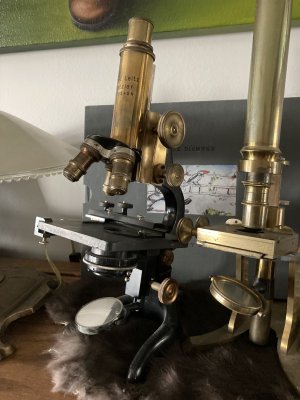raydm6
Yay! Cameras! 🙈🙉🙊┌( ಠ_ಠ)┘ [◉"]
I have always admired Leitz’s machinist’s skills - especially on the early Barnacks - but some of the work on their early microscopes is on another level.
I came across this vintage Leitz microscope at a local antique mall (asking $59) and was tempted to take it home and clean it up just to admire and play with the adjusting knobs and dials.
The machining is so beautiful; precise and exquisite. The sheen and patina on the metal and cast enameled base is something you won’t see anymore I’m afraid.
The tactile sense one gets from turning the dials and knobs is so appealing and satisfying. The operation is off the charts buttery smooth with micrometer precision. I almost want to buy it and use it as a fidget toy. 🙂
Has anyone ever used or had experience with these instruments?








I came across this vintage Leitz microscope at a local antique mall (asking $59) and was tempted to take it home and clean it up just to admire and play with the adjusting knobs and dials.
The machining is so beautiful; precise and exquisite. The sheen and patina on the metal and cast enameled base is something you won’t see anymore I’m afraid.
The tactile sense one gets from turning the dials and knobs is so appealing and satisfying. The operation is off the charts buttery smooth with micrometer precision. I almost want to buy it and use it as a fidget toy. 🙂
Has anyone ever used or had experience with these instruments?














